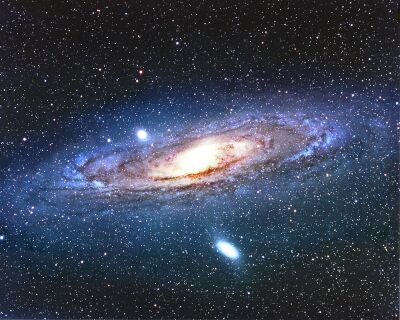Evidence of the most primordial structures in the universe may be visible as silhouettes in the glow of the Big Bang

The objects in question have remained hidden until now, because they were created in the dark ages of the universe before the stars were lit. "These silhouettes will provide us with the richest gold mine ever on the early universe," says Abraham Loeb of Harvard University.
The Dark Ages began with the disappearance of the massive fireball of the Big Bang 13.7 billion years ago and ended a few million years later, when the first stars ignited. During this time clouds of hydrogen formed into structures, which eventually became the stars and galaxies of today.
Astronomers were happy to understand this process of formation, but since there was no light then, this chapter in the history of the universe seemed out of reach - until now.
Loeb and his Harvard colleague Matias Zaldarriga think that the hydrogen gas must have absorbed radiation left over from the Big Bang. This absorption would have created silhouettes, which astronomers can detect today. The effect is similar to a cloud, which blocks the light rays and creates shadows on the ground.
Neutral hydrogen gas absorbs radio waves with a typical wavelength of 21 centimeters. However, the expansion of the universe since the dark ages would have caused the wavelength to shift tens or hundreds of times. Loeb and Zeldriga, therefore, support the search for silhouettes at wavelengths of hundreds of meters, a domain in the radio frequency spectrum, which has been ignored by astronomers.
Discovering these silhouettes is a significant challenge. Loeb and Zeldrig predict that the ingestion will create a drop in temperature of only about a thousand Kelvin. However, they say that the LOFAR radio telescope, which will become operational in the Netherlands in 2006, will be able to detect the effect after a year of observations.
"According to estimates, it will be able to detect signals on the order of 10 millikelvins, probably within a few hundred hours of observation," says radio astronomer David Hough of Trinity University in San Antonio, Texas. "So an accuracy of 1 millikelvin sounds reasonable - although I don't know if the LOFAR team would be interested in devoting a year to one study."
Other experiments, which are in the planning stages, including experiments placed in space to eliminate earthly influences, may be able to receive a signal in the next decade. The reward for this will pay off, say Loeb and Zeldriga.
The silhouettes contain a wealth of information not only about the formation of the first objects in the universe, but also about the fraction of a second after the big bang.
For news in New Scientist
